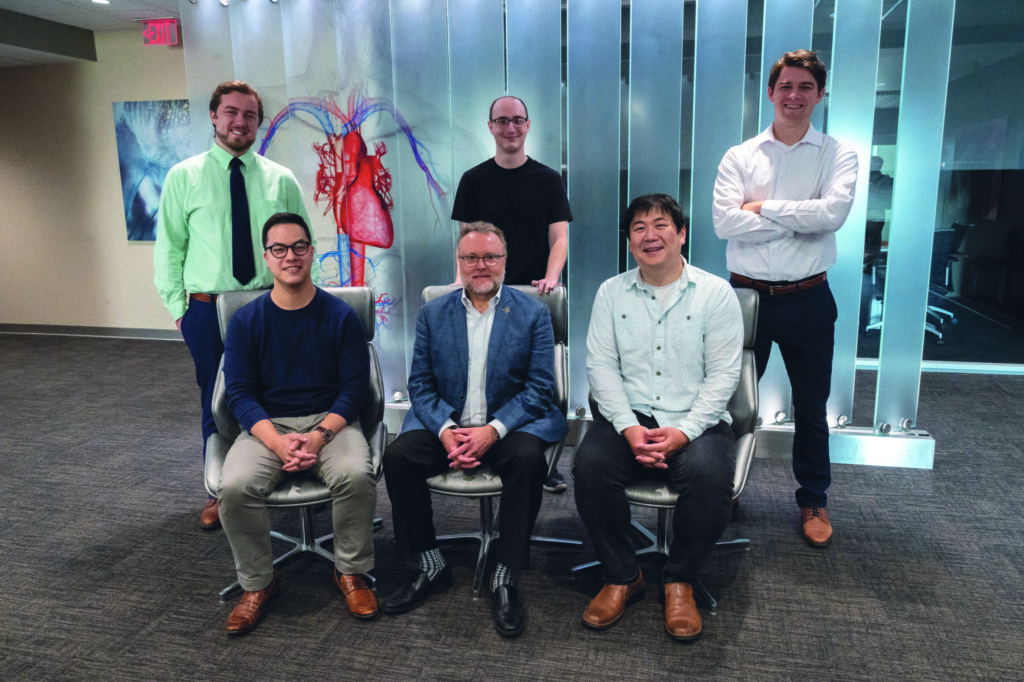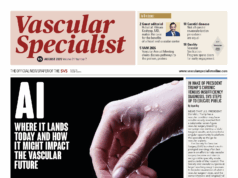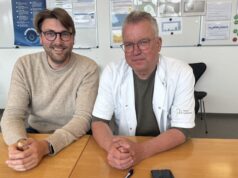
Last October, the University Pittsburgh’s Clinical and Translational Sciences Institute hosted its 10th Pitt Innovation Challenge (PinCh), providing a total of $550,000 in prizes, with the top-three winners each receiving a $100,000 grand prize. PinCh 2023 announced that SVS member Nathan Liang, MD, and his co-founders Timothy Chung, PhD, and David Vorp, PhD, were awarded $100,000 for developing Aneurisk, an artificial intelligence (AI)-based tool designed to assess the risk and prognosis of patients with abdominal aortic aneurysms (AAAs).
The grand prize teams presented their proposals to a panel of judges at the Petersen Events Center, where six finalist teams and 10 “elevator pitch” finalists showcased their ideas to address critical health issues. The Aneurisk technology aims to reduce adverse patient outcomes and surveillance costs by providing clinicians with a tool to project growth and likely outcomes upon diagnosis.
With their collective backgrounds in clinical medicine, biostatistics, biomechanics, artificial intelligence and machine learning, the team collaborated to utilize a retrospective dataset from UPMC to develop a machine-learning model that predicts patient outcomes after approximately five years.
“The results of our prototype algorithm got us really excited,” said Liang, a vascular surgeon at the University of Pittsburgh Medical Center (UPMC) and assistant professor of surgery and bioengineering at the University of Pittsburgh. “There is a potential opportunity to use our technology for treating or, at the very least, understanding these aortic aneurysms better. It became clear that this was a technology that could become something, and that’s where we were encouraged by the Pitt Innovation Institute to spin out a startup company.”
Aneurisk focuses on utilizing AI to assess the risk of AAA patients. The patent-pending technology has the potential to revolutionize the field by providing a preliminary prediction of aneurysm behavior, offering clinicians valuable insights for treatment decisions, said Liang. Work on the technology goes back over five years and led to the recent incorporation of the company in February 2023. Since they started working together, the team has received more than $1 million in funding for research and development.
Chung highlighted the importance of engaging with potential end-users during the development phase. The team spent six weeks contacting vascular surgeons across the country and other potential customers to gauge interest and refine their hypothesis and technology approach. The team expressed their gratitude for the responses received from SVS members who took the time to speak about common pain points in managing patients with AAAs.
“We have developed AI tools to accelerate image-based analyses, all while modeling clinical outcomes. Acceleration is critically important in offering point-of-care solutions for identifying which patients are at higher risk,” said Chung.
“The power of the machine-learning approach we are taking is that the prediction algorithm will be trained using many types of data and will determine which types and which specific parameters are critical in forecasting future aortic aneurysm enlargement or even eventual outcomes. We now know that biomechanics—specifically the balance between wall stress and strength—is important in considering the current risk of aneurysm rupture, but what other factors—and combinations of factors—can predict future rupture accurately now? What groups of parameters can predict future growth or time to critical size for the aneurysm? When fully constructed and clinically validated, Aneurisk will be able to do this on a patient-specific basis,” explained Vorp.
The Aneurisk team is now seeking additional funding to transition their technology from a proof-of-concept to a practical tool clinicians can use for patients. “I’ve been doing this long enough to know that many people promise a lot, but not everyone follows through. We’re trying to ensure that we’re offering something that meets the needs of patients and our fellow vascular surgeons,” said Liang.












